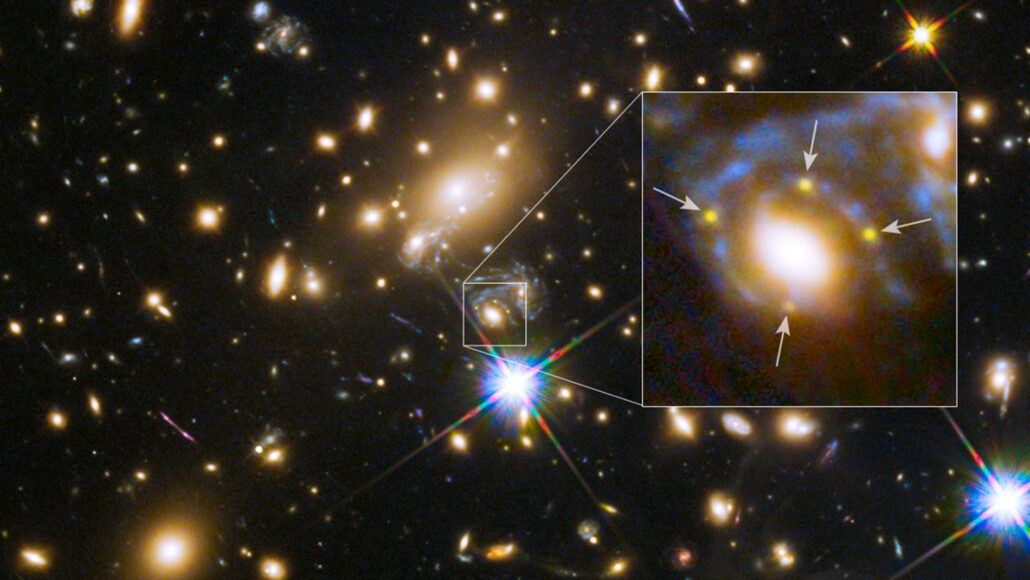
One stellar explosion can't get enough of the spotlight. After showing up five times in images taken by the Hubble Space Telescope, the bizarre "reappearing supernova" is now helping scientists solve one of astronomy's biggest mysteries: how fast the universe is expanding.
About 13.8 billion years ago, the universe as we know it was just a tiny point in space, containing all the matter in existence. Then, an explosion occurred: the Big Bang. That matter rushed outward — and continues to do so today, gaining speed all the time.
Scientists have known about the universe's expansion for nearly a century. But how fast it's expanding is more of a mystery. Two methods used to measure this rate, dubbed the Hubble constant, disagree. One of those methods relies on "standard candles" — using bright objects of known distance to calculate how fast stars and galaxies are rushing away from us. Supernovas, exploding stars that produce copious and steady light, are one of these important benchmarks of distance. The other method uses the "cosmic microwave background," leftover radiation from the Big Bang. The problem is that these two methods produce different answers.
There are myriad explanations for the differing values. Scientists might have failed to take into account repulsive dark energy, a mysterious phenomenon that is seemingly causing the universe to expand at an ever-faster rate. The universe might contain particles we haven't yet identified. Or one of the current calculations might just be wrong.
"It's a conundrum," Patrick Kelly, an assistant professor of physics and astronomy at the University of Minnesota and lead author of a new study on the Hubble constant, told Live Science.
Enter supernova Refsdal. Kelly first discovered this exploding star in 2014, when it popped up four times, in different positions, around the same galaxy cluster. The supernova appeared in multiple locations because the cluster's extreme gravity bent and reflected the supernova's light, creating what is called a gravitational lens. Based on Refsdal's whack-a-mole act, astronomers predicted that the supernova would also reappear in 2015. Their prediction came true.
In their new research, Kelly and his colleagues triangulated measurements of the supernova's location to calculate a new value for the Hubble constant. The results, published May 11 in the journal Science, find a value for the Hubble constant that is much closer to the one derived from the cosmic microwave background, rather than the standard-candle method. According to the new study, the universe is expanding at a rate of about 41.4 miles per second (66.6 kilometers per second) per megaparsec (or for every 3.2 million light-years).
But the findings don't put an end to the debate; they are just one more method, among many, for studying the expanding universe. "They don't rule out the [standard candle] supernova value," Kelly said.
Supernova Refsdal is the first star of its kind to reappear in multiple images, but Kelly expects more in the future. Those should bring scientists closer to understanding the true value of the Hubble constant, Kelly said. "Once we have several of these, it will be interesting what they can all say together."







